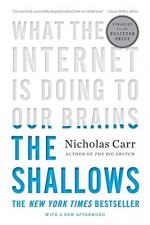
|
| Name: _________________________ | Period: ___________________ |
This quiz consists of 5 multiple choice and 5 short answer questions through Part II (Pages 45 - 88).
Multiple Choice Questions
1. How many categories does Carr claim our technologies can be divided into in Chapter Three?
(a) 4.
(b) 7.
(c) 8.
(d) 2.
2. What is Alan Turing best known for creating?
(a) The modem.
(b) The software language Python.
(c) The so-called Turning Machine, which is the forerunner to the modern computer.
(d) The circuit board.
3. How does the brain's ability to adapt to changes shift as people age?
(a) The brain becomes less able to change as quickly as people age.
(b) The brain requires surgery to be able to change as people age.
(c) The brain becomes more able to change as people age.
(d) The brain needs medication to be able to change as people age.
4. What skill was Socrates most well-known for?
(a) Editing.
(b) Oration.
(c) Writing.
(d) Debating.
5. What was one of the main drawbacks to scrolls?
(a) They were only used by the poorest people.
(b) There was never enough ink to use on the scrolls.
(c) They were expensive.
(d) They were fragile.
Short Answer Questions
1. Which neuroscientist carried out ground-breaking experiments in the late 1960s that pioneered the ideas of neuroplasticity?
2. What else besides repeated physical actions can rewire the human brain?
3. What does Hebb's rule say?
4. In Chapter Three, which of the following does Carr say is often not recognized by a technology's inventor?
5. What does the Turning Test designed to measure?
|
This section contains 315 words (approx. 2 pages at 300 words per page) |

|




